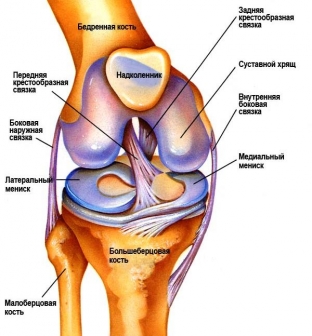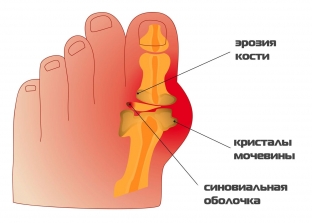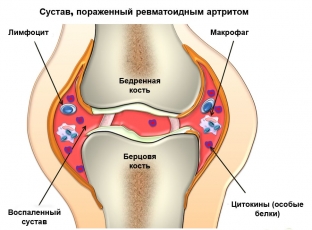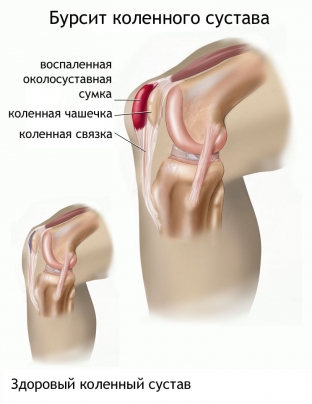The basis of our life – traffic. Our body can move with the help of a complex mechanism: the musculoskeletal system, which consists of the bones of the skeleton, interconnected by joints and somatic muscles. The ability to walk gives us the legs, or rather the knees. We run, jump, jump, just walk or jump over. And with all this, the knees are constantly in motion. Due to injuries, improper lifestyle, work habits and many other reasons and processes occurring in the body, the knees begin to hurt, swell, whine, crunch. To answer the question of why the knees hurt, let's figure out what are the features of the knee joint.
Features of the structure of the knee joint

The knee joint connects the hip bone to the two bones of the lower leg (the tibia and the tibia). Bones are connected by ligaments, muscles and tendons. Between the bones there is a cartilaginous lining – meniscus – provides cushioning in the joint and stabilizes the knee. The synovial fluid acts to lubricate the knee joint and prevents the bones from rubbing.
Synovial fluid is stored in a pouch called bursitis. The kneecap protects the knee joint from injury. Therefore, if changes are felt in the knee, then it is worth finding out why the knees hurt, which caused violations in each element of the general mechanism of the knee joint.
Causes: Diseases causing pain in the knee
To determine the cause, that is, the disease that causes pain in the knee, it will help to determine the nature of the pain: sharp and strong unbearable, pulling and aching. Pain may occur with flexion or extension, or may be present all the time. The focus of pain can be in the patella itself, under the knee, above or below, even on the side. Accompanying the pain may be a crunch or swelling of the knee.
To find the reason why the knees hurt, it is necessary to undergo an examination, which will show on the basis of analyzes which component of the knee joint is damaged and how to restore it. Not always pain in the knee begins due to the course of a local disease, the cause may be an intervertebral hernia, varicose veins or trauma to the hip joint.
Gouty arthritis (gout)
In the blood exceeds the level of uric acid, which entails the collection of salt in the joints. With this disease, there are severe pains in the joints, not only in the knees. Pain increases when walking due to a change in the position of the leg or arm. Pain can begin with attacks, first bring to an unbearable state, and then subside. Such a lull can be up to a year, and then the condition worsens.

Rheumatoid arthritis
In simple words, this disease is called inflammation of the joints. Usually, arthritis begins to bother people after 30 years. There may not be severe pain in this disease, but discomfort is felt after sleep, during squats. In the acute course of the disease, appetite may disappear, body temperature may rise.

Knee bursitis
Bursitis – is a disease of the synovial sac that stores fluid to lubricate the components of the knee joint. Pain is felt when running, walking, squatting, with any change in position, the knee may crackle. The joint begins to swell, becomes reddish, the temperature may rise.

There may also be other diseases:
- tendinitis (tendiosis) – tendon dystrophy;
- Baker's cyst (popliteal bursitis) – the presence of a dense formation in the fossa under the knee;
- fibrinous film syndrome;
- Koenig's disease (dissecting osteochondritis) – separation of part of the cartilage from the bone, its death and transfer to the joint fluid.
The spread of these and other diseases associated with the knees can occur when the knees freeze, injuries (ruptures and damage to the tendons, menisci, cartilage, ligament rupture), dislocation of the knee or kneecap. Why do my knees hurt for no apparent reason? After all, disruption of the spine, especially the lumbosacral region, affects the knee joint. Overweight, flat feet, liver dysfunction, biliary tract problems can cause knee pain. During pregnancy, women may experience increased pain in the knee joint.






Add a comment